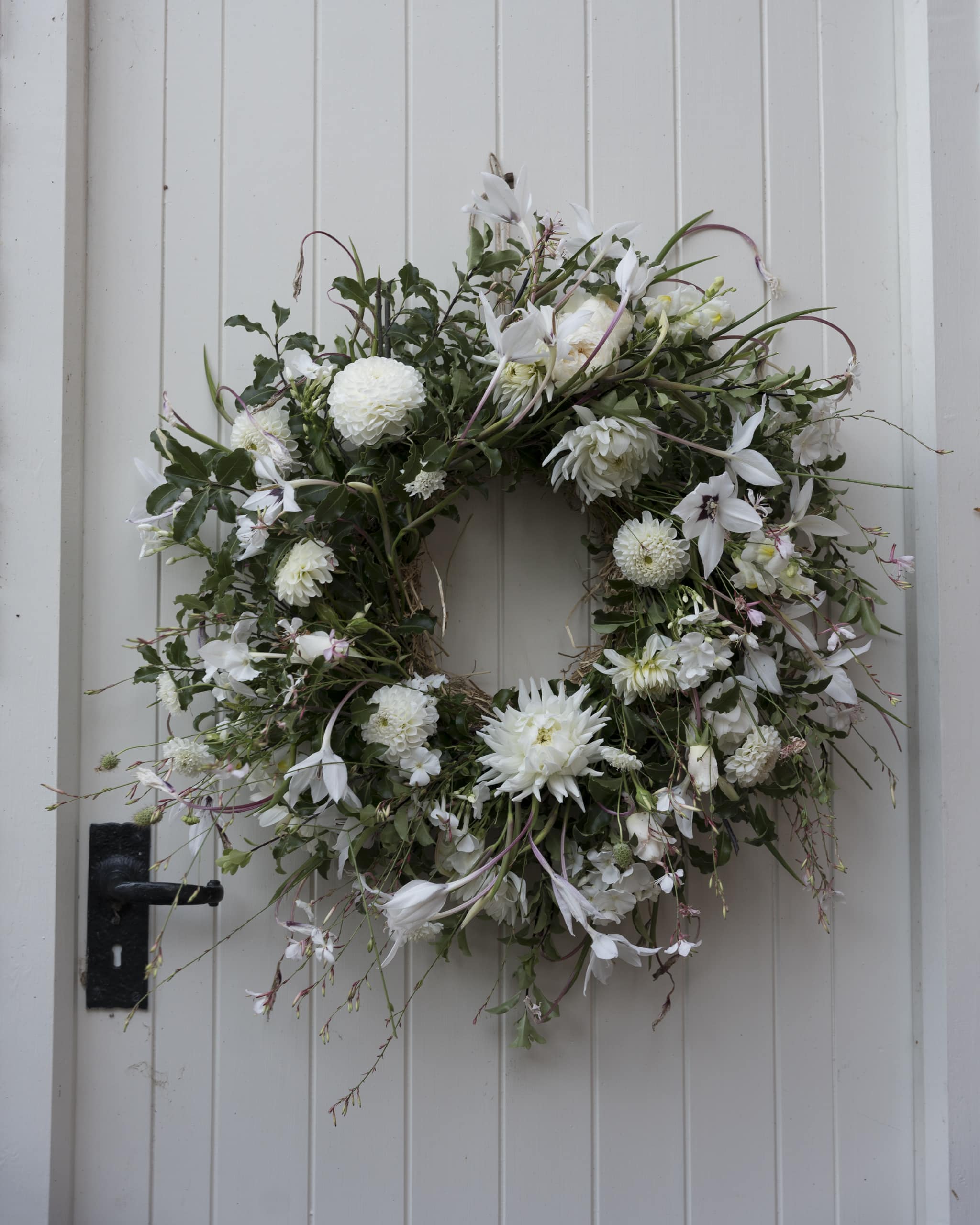Ihave always regarded foliage as a really important design element if not the most important element of any floral piece. “Even more important than the flowers?” I hear you cry. Well, it's up there. While you will always be able to purchase your blooms, it is a much harder ask to find that unique filler foliage which will lift your florals from standard to amazing seasonal floral art. I found this out the hard way last year so this year, I have resorted to growing my own from seed. And I’ll tell you why.
Everyone recognises the focus flowers, particularly if they are the more traditional roses or peonies, dahlia’s or chrysanthemums or even carnations (definitely looking to be an on trend bloom this year). Of course having beautiful blousey blooms (with scent becoming increasingly important) is still a given, but there is an increasing focus on loose natural seasonal arrangements that reflect their surroundings. This can only be achieved using foliage, often cut locally, and unique textural floral elements, referred to rather unglamorously as “filler foliage” that are often so unique you would struggle to even find them at the wholesalers.
With Greenery being Pantone's 2017 colour of the year, most of the trend predictions are highlighting a greater use of foliage. The reality is though that even the most flower conscious consumer be that a bride who has studied Pinterest or Instagram, or your more discerning clients would struggle to recognise let alone name the type of foliage and other textural floral elements in their favourite bouquet or arrangements. This is even if they had noticed these elements beyond the focus flower in the first place.
It is a truth universally acknowledged, and one that many floral designers have known for sometime, that unique filler foliage when added to traditional focus blooms differentiate their designs from the standard. It is both the shape and texture of these so called “fillers” or “greens” as our American cousins refer to them, that creates that light, airy naturally stylish movement. Often, it is the use of this unique foraged seasonal foliage that becomes their trademark and not the focus blooms. Both Sarah Winward and Amy Osaba are great examples of using local seasonal foliage in their work. Zita Else is another great example, the queen of floral texture. Using seasonal foliage and unique filler foliage allows both shape and texture to define their artistic expression. It is because of the slightly quirky nature of the material, a more natural, wilder and more connected romantic look is achieved.
There is both good and bad news here if you wish to create designs that lean towards this wild garden style floral art whose bent is towards more sustainable and seasonal floristry.
The good news is that you will already have at your fingertips a vast array of seasonal foraged foliage that you can snip to your hearts content (always taking care it is not your next door neighbour's prize shrub of course). At key moments of need, I find myself starting at the hedgerows in the surrounding countryside looking for the foliage that personifies the moment. Catkins are on my radar Right now but everything requires careful cutting and very careful conditioning.
The bad news is that even if you can identify that quirky piece of foraged foliage or unique textural flower, often they are difficult if not impossible to source from a wholesaler as many of them transport so poorly. The solution may come down to finding your nearest flower farmer and hoping they grow what you need (Flowers from the Farm* and the British Flower Collectives are good starting points here). [* For full disclosure, I am a seedling member of Flowers from the Farm]
The conclusion I have come to is if I want a unique filler foliage and textural flowers for cutting that will differentiate my florals, I will need to have a go at growing my own. Sarah Raven has some great advice on growing such things even with only a small patch in your garden.
The choice is bewildering but there are still minimum requirements from these other key floral elements. Of course, you want foliage fillers to give you that light airy natural textured look that reflect the local surroundings but they must be practical too, and that means stem length and longevity. It is no good having arrangements that will not survive the day.
Below is a list of carefully curated filler foliage choices. It is by no means exhaustive but includes elements that will complement the other key flowers that I plan to use including dahlias and roses.
- Phlox drummondii creme Brûlée - a lovely dusky-pinks and peachy-cream colour blends well with other key floral elements
- Salvia farinacea “blue bedder” - a strong grower with a good stem length for cutting<strong
- Sweet Fennel Foeniculum vulgare Bronze form - I have the standard form too but this one has a very sought after bronze colour
- Agastache rupestris apache sunset - deep burnt orange scented hyssop
- Alchemilla mollis robustica - this grows well in my garden already but this variety has lovely tall stems for cutting, every florist's minimum requirement
- Astrantia major great masterwort - you can buy this from the wholesalers but frankly I love it so much I wanted to grow it to avoid the cost
- Atriplex hortensis plumes - mixed - it has taken me ages to identify this one but these striking spikes have lovely seedheads
- Helichrysum bracteatum monstrosum - I will be drying these for Autumn and Christmas when the summer texture has run out
- Heuchera cyindrica greenfinchis - I adore heuchera for their amazing leaves and beautiful spikes of flowers - great to use in buttonholes.
- Limonium suworowi rat tail statice pink pokers - I saw this used to great effect in the Christmas swag at Cotehele and know it will be amazing for drying for Christmas as well as using fresh for the summer
- Lysimachia ephemerum - tall spikes of white flowers with a dusky pink centre
The conclusion I have come to is if I want a unique filler foliage and textural flowers for cutting that will differentiate my florals, I will need to have a go at growing my own.
My prediction for 2017 florals is that it will become increasing important to achieve that “I’ve just randomly picked this from my garden in wild romantic abandonment” look. This can only ever be achieved by using both local seasonal foraged foliage and carefully curated filler foliage.
- Local seasonal foliage - complements and frames the focus flowers in any design be that bouquet arrangement or larger installations and achieves a seasonal feel that uniquely connects the event to the location.
- Carefully curated filler foliage - in my view the most important floral element of any design are the “fillers”. Filler foliage is critical in providing not only shape but critically texture. From each design flows a unique ethereal beauty that you could pretty much only get from adding these unique florals from your own cutting garden or your local flower grower.
You can read even more from Fierceblooms, this flower grower and Cheshire florist on the floristry blog.
On the site, there are also lots more articles about my evolving canalside cheshire flower cutting garden.
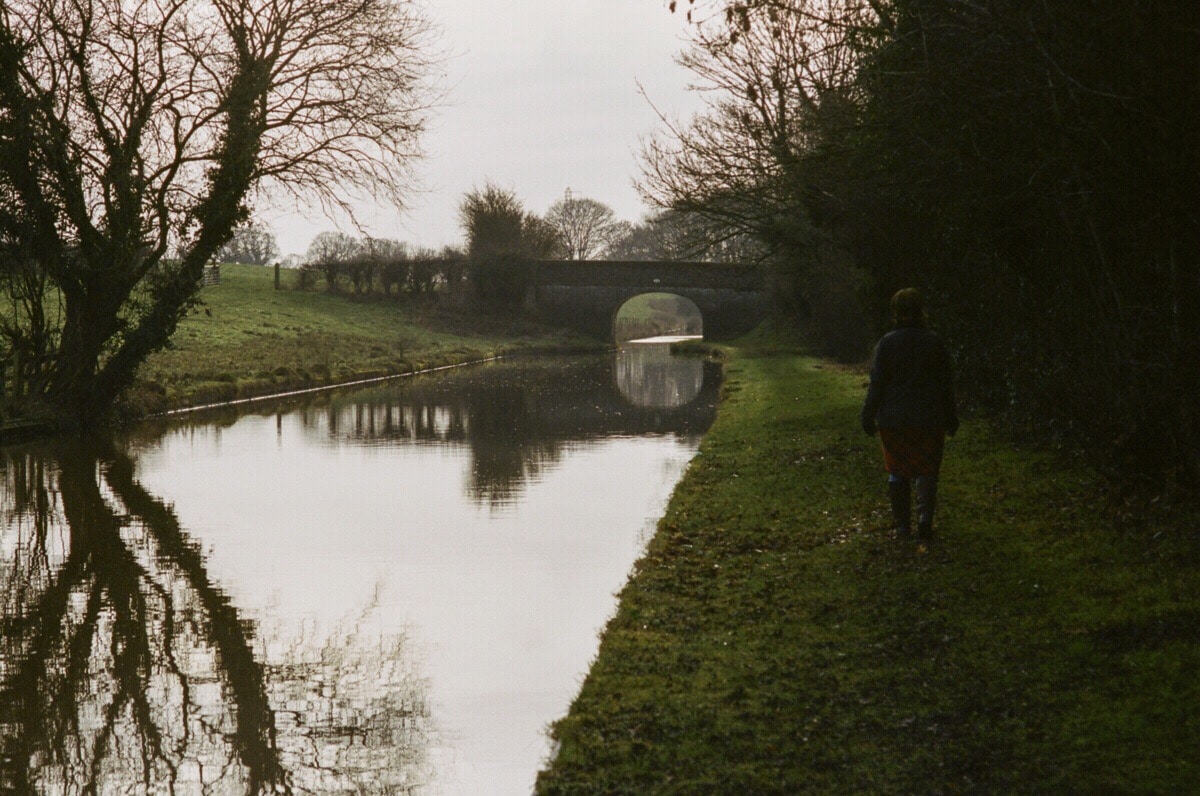


About
We're an environmentally conscious local floral business rooted in our wild Cheshire canal side cut flower garden, inspiring our weddings, workshops and creative digital online classes. If sustainability matters to you, if you care that floral creations are as kind to the environment as they are beautiful, then I am a kindred spirit.
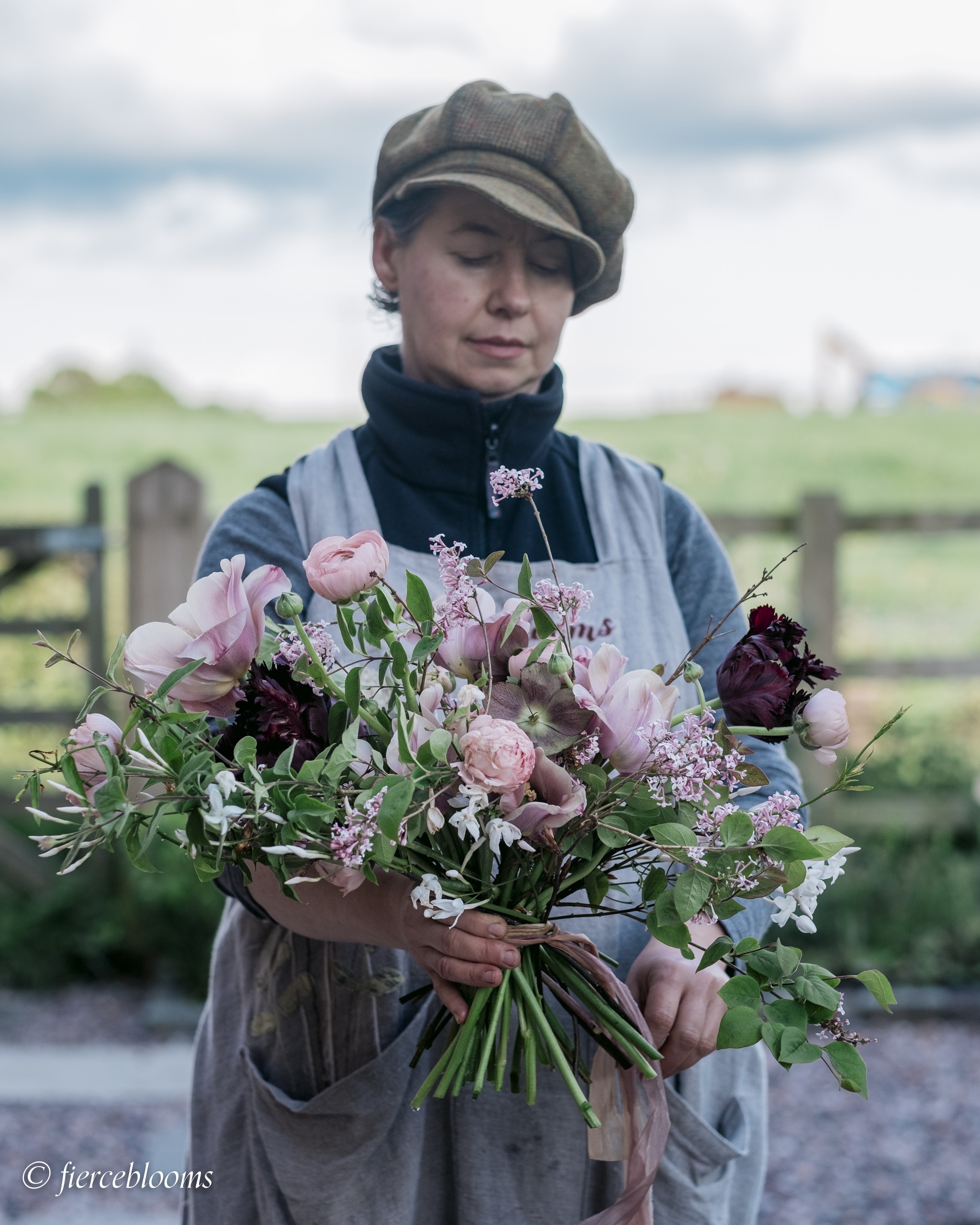
Online Floral Classes
Sustainable Everlasting Autumn Wreath Class
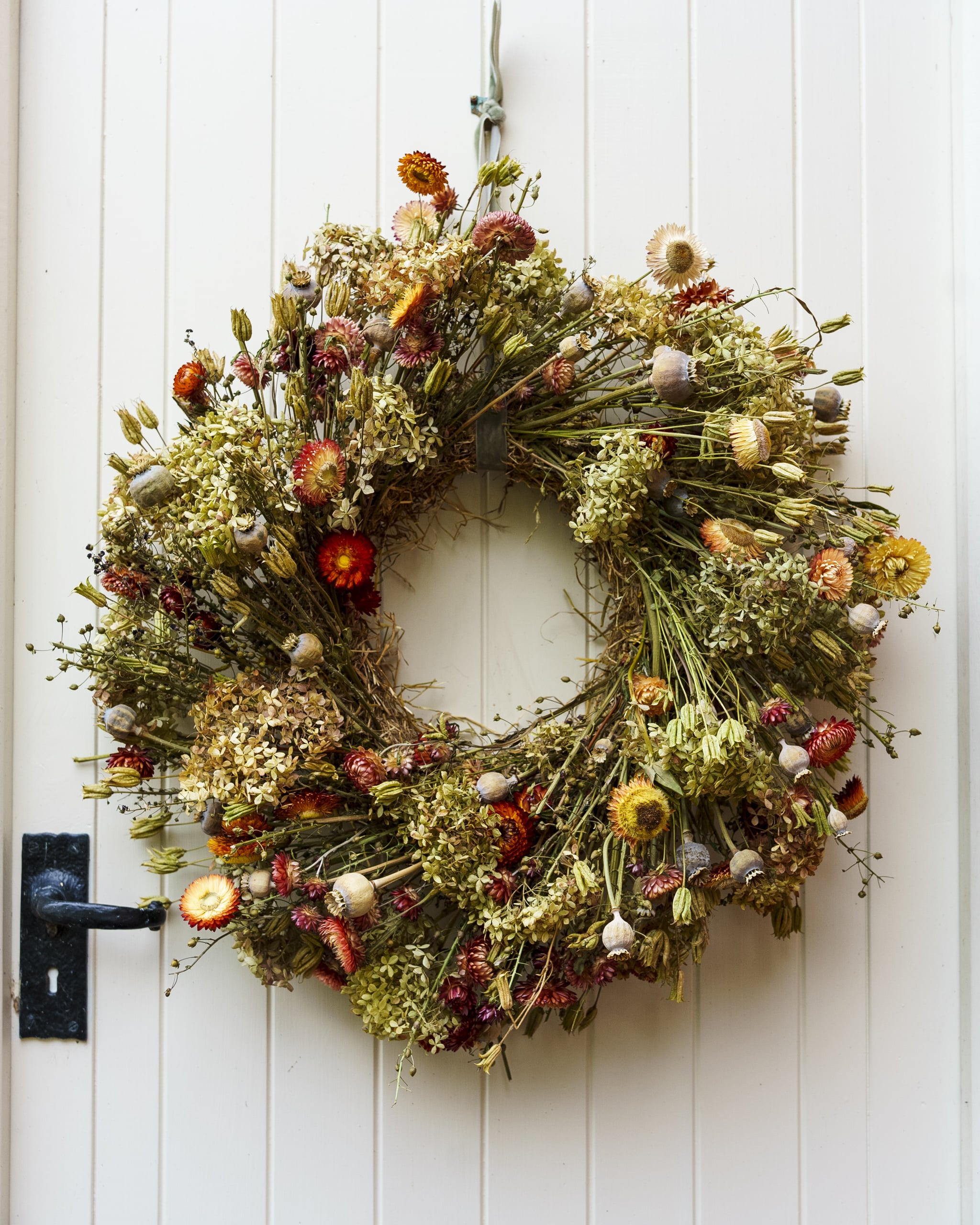
Sustainable Seasonal Christmas Wreath Class

Fresh And Dried Sustainable Summer Wreath Class
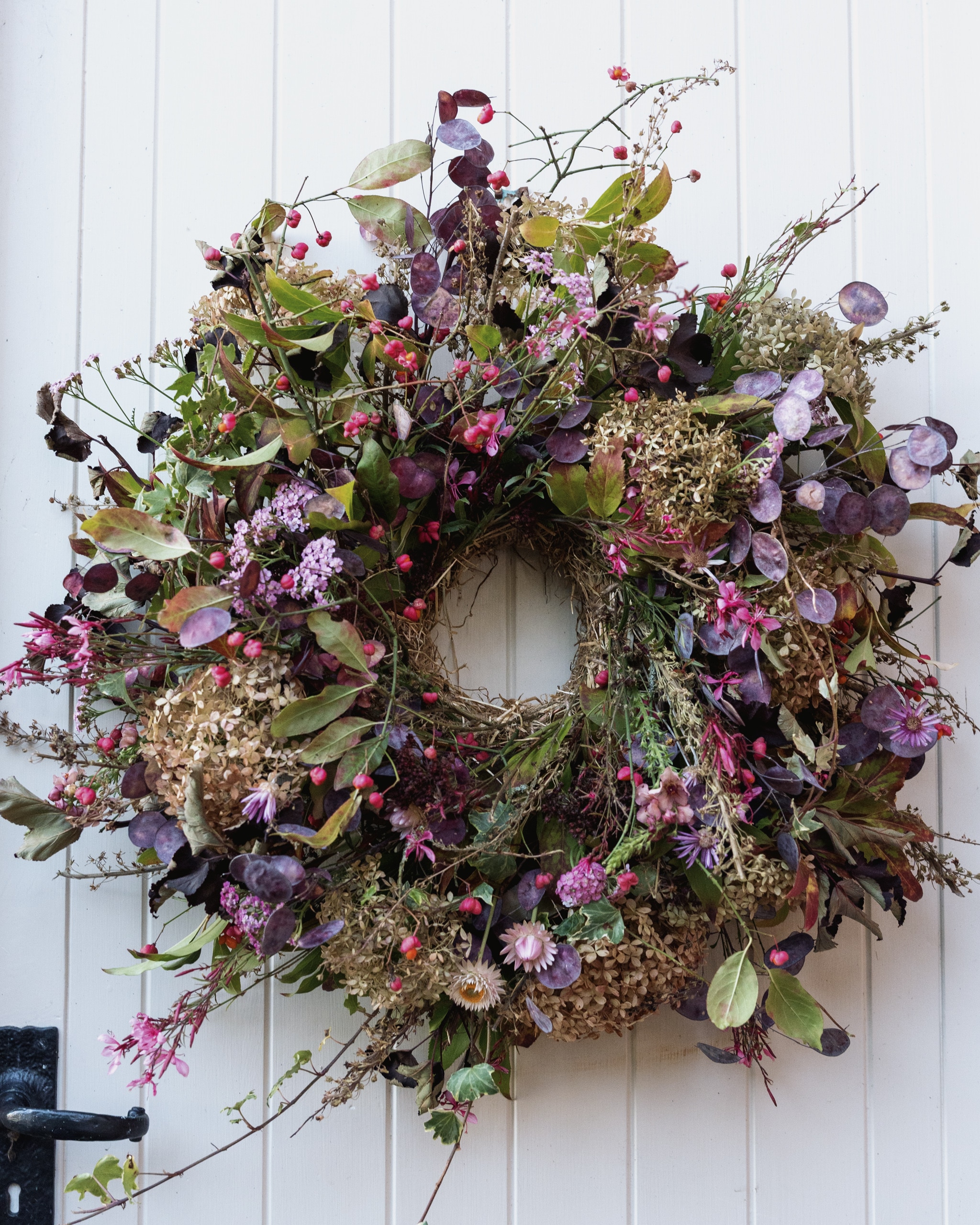
Always, our fierce focus in our unique online classes is to share how we create our signature "Wild garden Style" floral designs using local, scented, seasonal and sustainable flowers.
In fact. we only ever use local, garden grown (in our case) British flowers. Our desire is in every class to inspire you to create your own planet friendly, environmentally conscious floral designs using ingredients that reflect your season, your flora and your locale.
Rather than a constraint, we believe creating with your own seasonal garden grown flowers encourages you to make floral art that truly embodies your own unique floral signature.
2023 will be our 4th season of live online classes. We look forward to continued conversations with sustainable floral enthusiasts from the far flung Scotland Highlands, down to Devon and Cornwall, across to Wales, and way beyond to North America, Australia, New Zealand. To hear more subscribe to our newsletter.
Online Flower Class Testimonial
During this challenging time in our world, it’s important more than ever to embrace the world around us. I’ve truly enjoyed what you are sharing in your online classes. It’s brilliantly uplifting.



